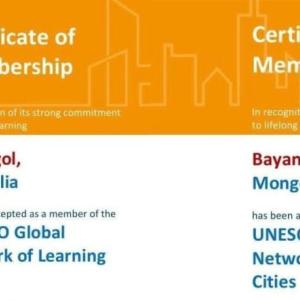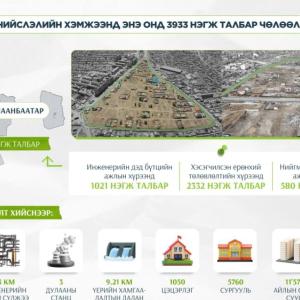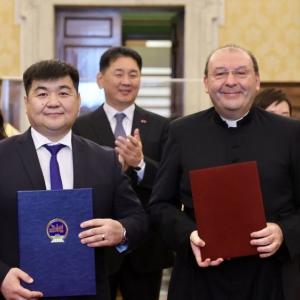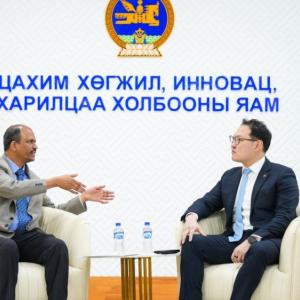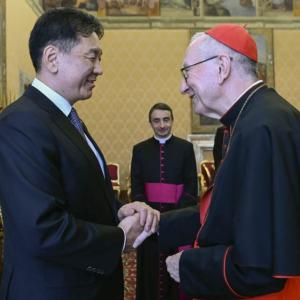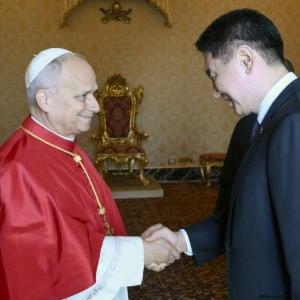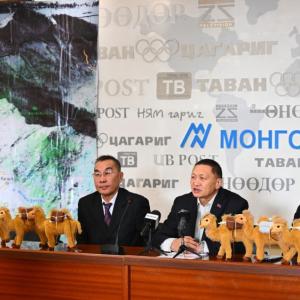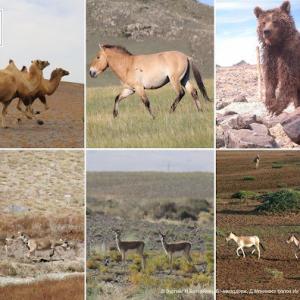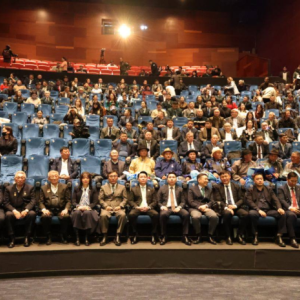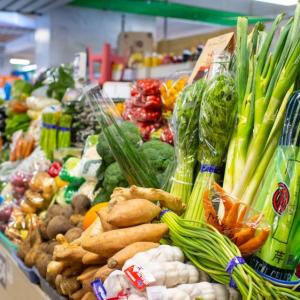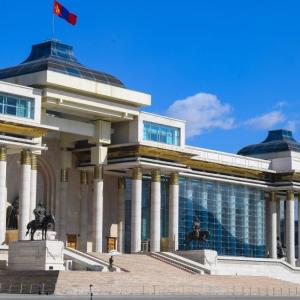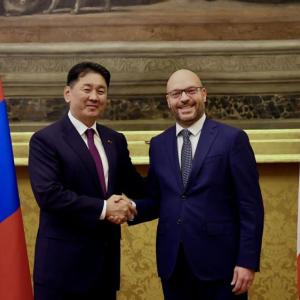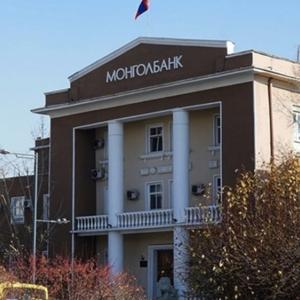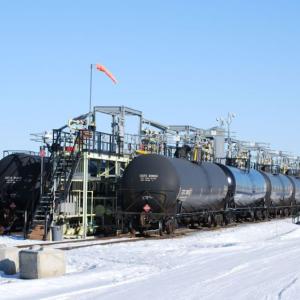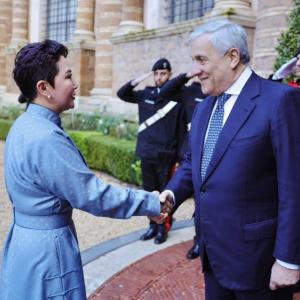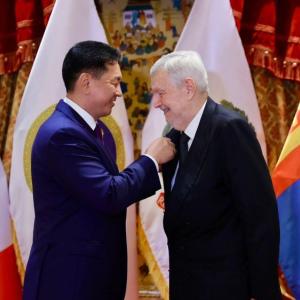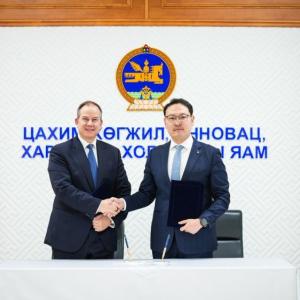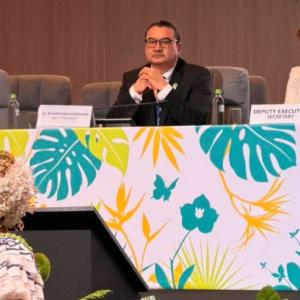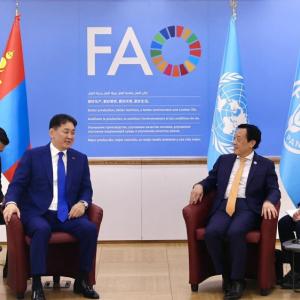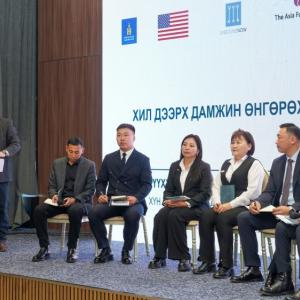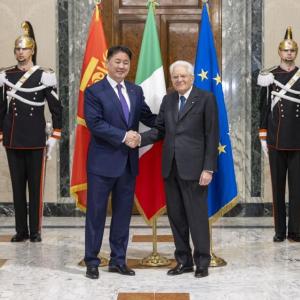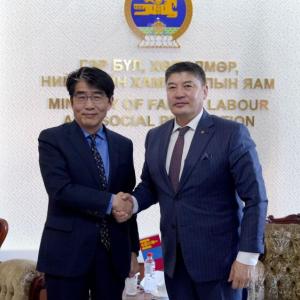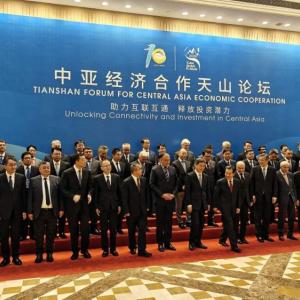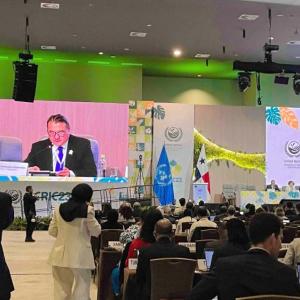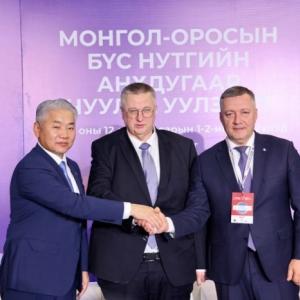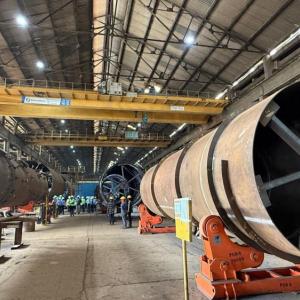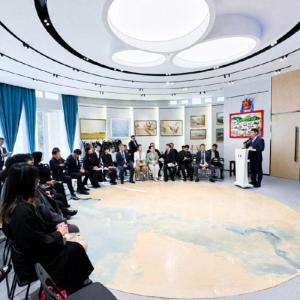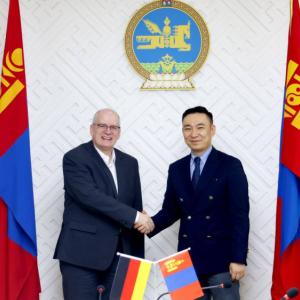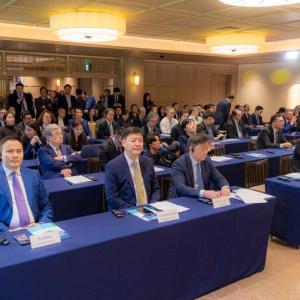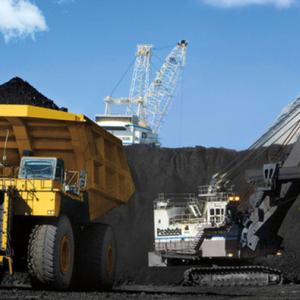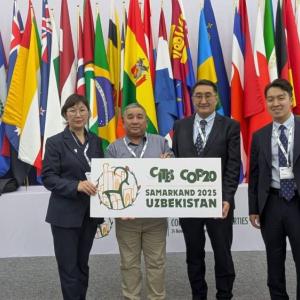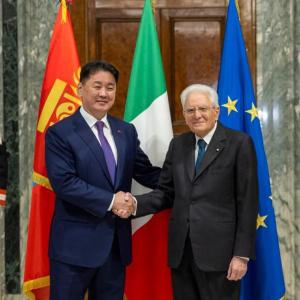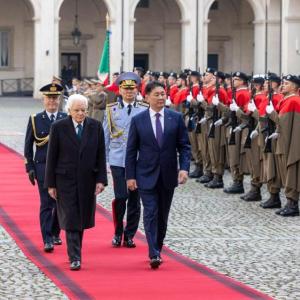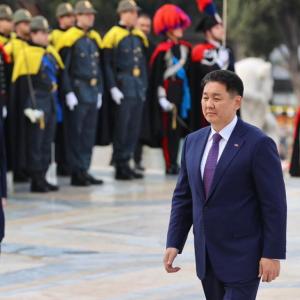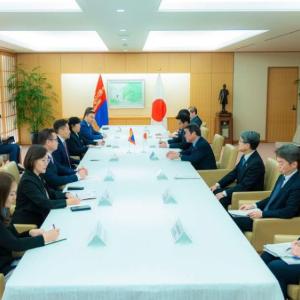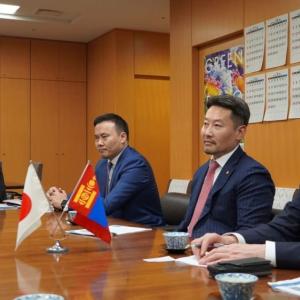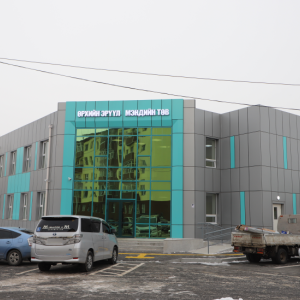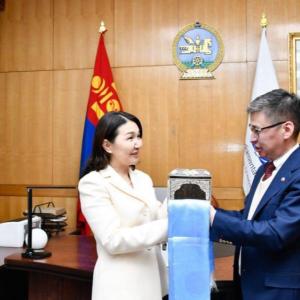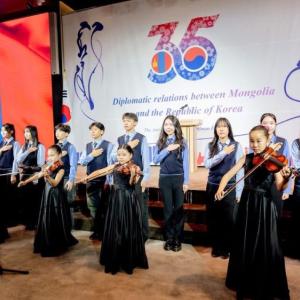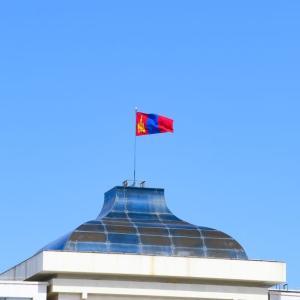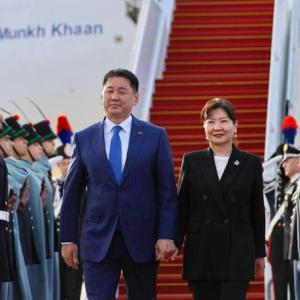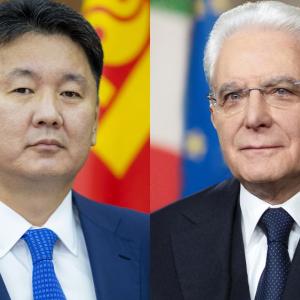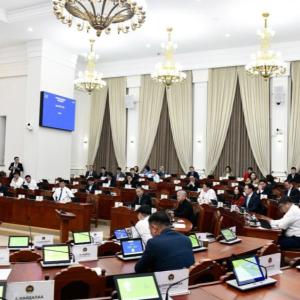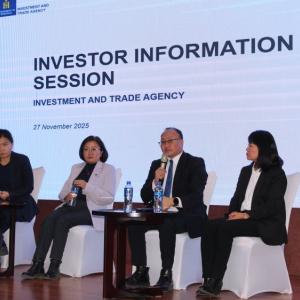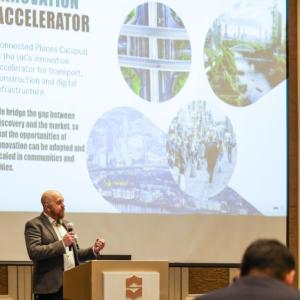Mongolia Opens Third Rail Line to China
Development Projects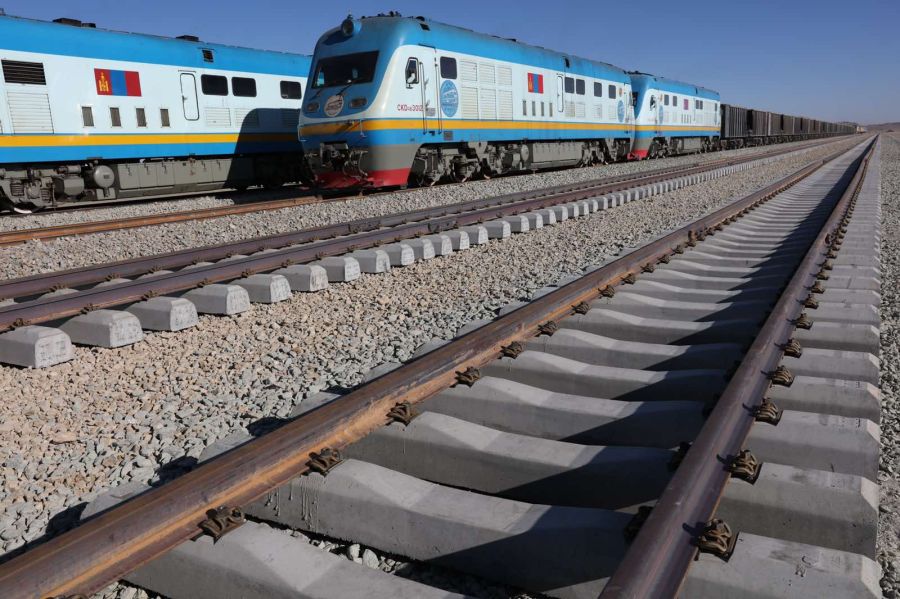
Ulaanbaatar /MONTSAME/. On November 25, 2022, the Prime Minister of Mongolia, L. Oyun-Erdene, opened a new rail link to accelerate Mongolia’s export competitiveness, seeking wider economic opportunities as part of the Government`s New Revival Policy.
Mongolia has no access to the sea, out of 42 dry-road border points, only three of them – Sukhbaatar, Ereentsav, and Zamiin-Uud are connected by railroads. About half the amount of copper and copperized coal exports are passed solely through Gashuunsukhait whereas 70 percent of imported common-use goods are passed by the Zamiin-Uud border point. Thus, the Zuunbayan-Khangi railway, spanning 226.9 km across the southeast of Mongolia, serves as a key connection between the Tavantolgoi-Zuunbayan railway which is expected to open by the end of this year, and the KhangiMandal crossing on Mongolia’s border with China. Because, the Khangi border point is located exactly at the middle point of Gashuunsukhait and Zamiin Uud, making it a geopolitically strategic point. The railway was built in just eight months, through a publicprivate-partnership investment model. About 120 companies, 600 engineers, and more than 3000 workers took part in the construction of the ZuunbayanKhangi railway.
The Mongolian first tripartite railway junction is estimated to create more than 1,300 new permanent jobs and to lead to a rapid 30% increase in Mongolian export freight volume, with annual freight volumes set to stabilize at around twice their current level of 10.4 million tonnes from 2025, significantly boosting state budget revenues and local employment. Besides, it is expected that the total volume of rail transportation will increase by 65 percent by combined with the Tavantolgoi-Gashuunsukhait line, and transportation to Baotou, China, the neighboring country`s main mining export market, will be shortened by 242 kilometers, saving transportation costs and time. The Financial Times calculated that by using the Khangi- Mandal border crossing instead of Zamil-Uud, the new line will cut the distance of transporting goods from Yuruu in northern Mongolia to Bugat in China by 306km, reducing the cost of shipping iron ore by rail from USD 4 to USD 8 per tonne.
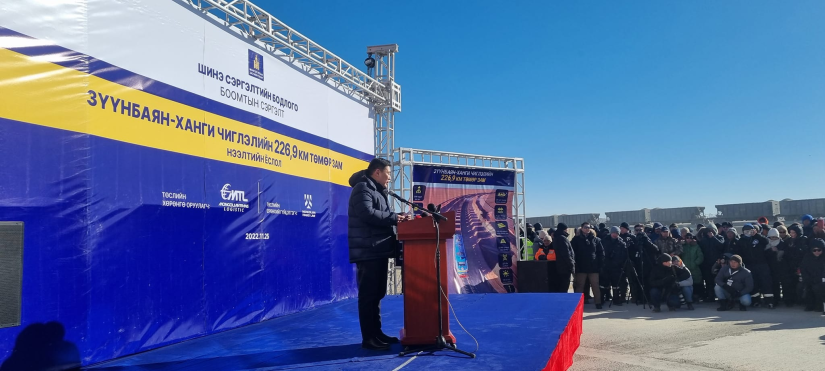
Speaking following the opening, the Prime Minister of Mongolia, L. Oyun-Erdene, said: “Today's opening marks a major milestone in the Government of Mongolia's ‘New Revival Policy’, which is focused on strengthening the country's economy following the pandemic and making Mongolia into a leading Asian country by 2050."
During the 2022 Mongolian Economic Forum, Oyun-Erdene emphasized Mongolia’s effort to ramp up its commodity exports, particularly coking coal and copper. The government’s plan for partial privatization of state-owned companies aims to attract foreign direct investments in energy, border ports, and industrialization megaprojects, with a goal of MNT 150 trillion (or USD 48 billion) investment. According to S&P Global Commodity Insights, “Mongolia is a key metallurgical coal and copper concentrates supplier to China, with most of the trade happening through trucks. Mongolian truck suppliers in 2021 faced severe logistics issues in hauling shipments from land ports to China due to the pandemic-led restrictions at border crossings.”
The Minister of Road and Transport Development, S. Byambatogt, said: “The new railway will become the second line of the Mongolia-ChinaRussia Economic Corridor. Previously, there was only one railway connecting MongoliaChina-Russia, which was the Altanbulag- Ulaanbaatar- Zamiin Uud line in the last 70 years. Therefore, the second new railway crossing in the south of the Central Asian country is a big step for the Mongolian economy and is the actual realization of the ‘New Revival Policy’.”
Recently, Mongolian President Ukhnaagiin Khurelsukh
paid a state visit to China just two
days after the Zuunbayan-Khangi
railway. More specifically, within
the framework of the state visit
of the President of Mongolia to
the People`s Republic of China
which took place on November
27-28, the heads of the state of
the two countries held official
talks and agreed to raise the trade
turnover to USD 20 billion over
the next five years, increasing the
exports of mineral products, and
sustainably exporting coal from
Mongolia to China in the long
term.
Mongolia's total foreign trade with China in the first 10 months of this year was USD 10.9 billion, which showed an increase of 25.8 percent compared with the same period of the previous year. Specifically, the export to China is USD 8.48 billion, and the import was USD 2.47 billion. Compared with the same period of the previous year, exports increased by 30.7 percent and imports by 11.4 percent, respectively.
Looking at the products exported from Mongolia to China, 55 percent are coal, and 28 percent are copper ores and concentrates. The remaining 17 percent is made up of iron ores and concentrates, wool, animal hair, and crude oil.
In 2019, Mongolia exported 31.2 million tons of coal to its southern neighbor, which was the largest amount in history. If the new railway operation is successful, by 2028, Mongolia will export 60 million tons of coal per year.
The construction of the Khangi-Mandal border port will be completed in 2023. A series of infrastructure, energy, environmental and humanitarian projects are also planned.
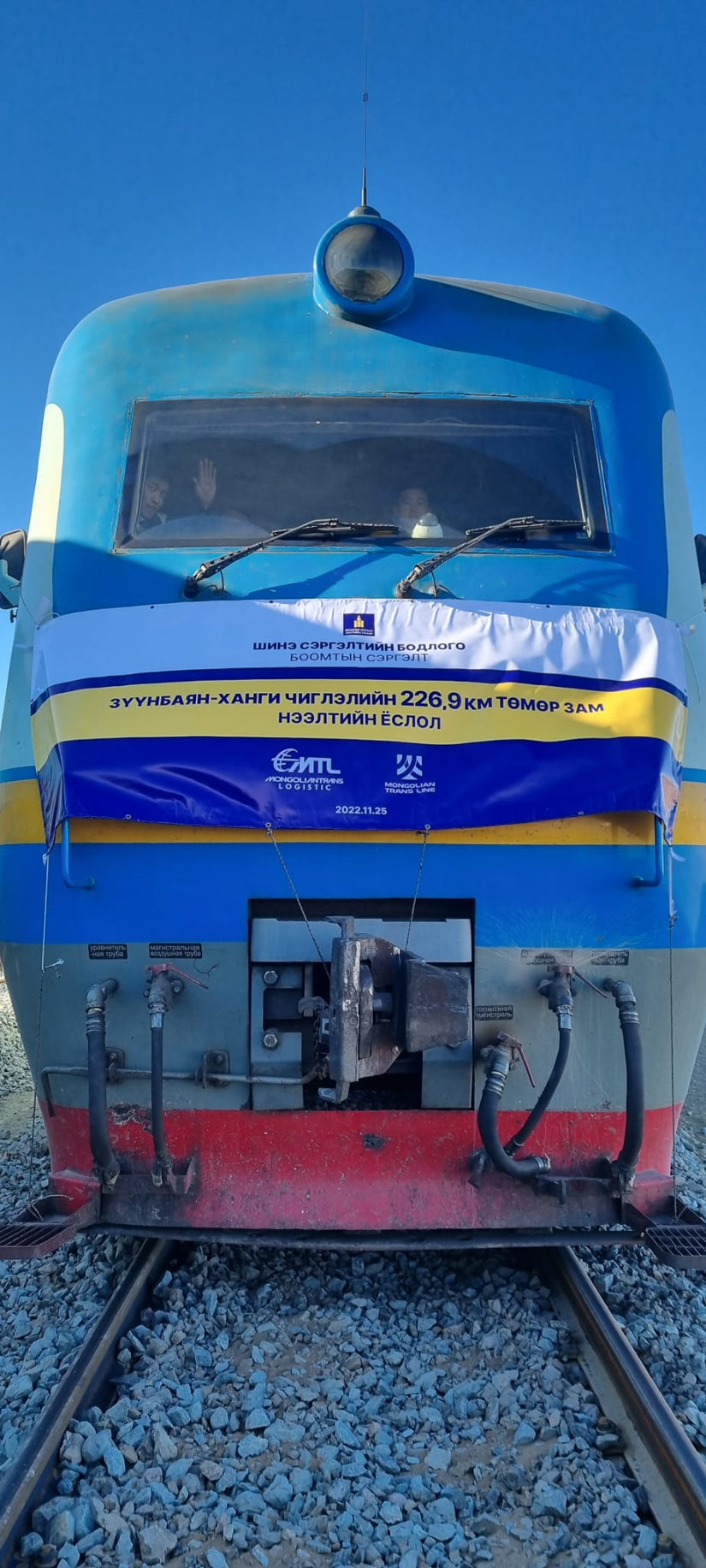
 Ulaanbaatar
Ulaanbaatar






